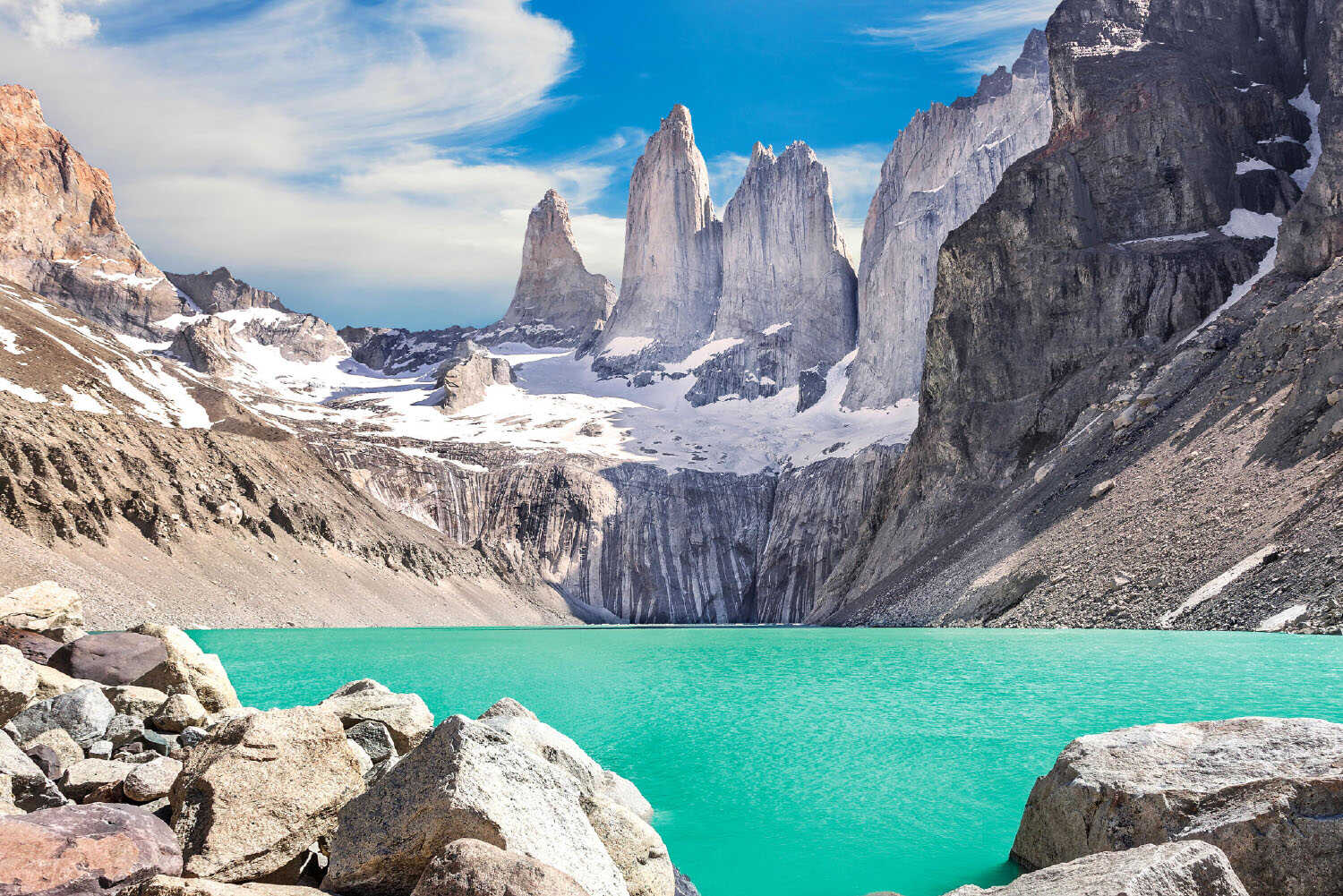When it comes to breathtaking natural beauty, Torres Del Paine National Park in Chile is truly a gem. This iconic national park is located in the southern Patagonia region and is renowned for its stunning landscapes, diverse wildlife, and challenging hiking trails. Let’s delve into all the details about this remarkable destination.
Location and Overview
Torres Del Paine National Park is situated in the Magallanes Region in Chile, approximately 112 kilometers north of Puerto Natales and 312 kilometers north of Punta Arenas. The park covers an area of over 2,400 square kilometers and is part of the National System of Protected Forested Areas of Chile. Its name, Torres Del Paine, refers to the three iconic granite peaks that dominate the park’s skyline.

Credit: facts.net
Key Attractions
One of the most famous features of the park is the Cuernos del Paine, a set of striking horn-shaped peaks that rise dramatically from the surrounding landscape. The centerpiece of the park, however, is the three granite towers known as the Torres del Paine, which attract hikers and climbers from around the world.
In addition to its iconic peaks, Torres Del Paine National Park is home to numerous other natural wonders, including glaciers, rivers, lakes, and forests. The park’s diverse ecosystems support a wide variety of wildlife, including guanacos, foxes, pumas, and a rich array of bird species.
Activities
For outdoor enthusiasts and nature lovers, Torres Del Paine National Park offers a wide range of activities to enjoy. Hiking is one of the most popular activities, with trails ranging from easy walks to challenging treks such as the famous “W” and “O” circuits. These multi-day hikes allow visitors to experience the park’s stunning scenery up close.
Other popular activities in the park include camping, wildlife watching, birdwatching, fishing, and kayaking. The park’s pristine lakes and rivers provide excellent opportunities for water-based activities, while its extensive network of trails caters to hikers of all skill levels.

Credit: national-parks.org
Conservation and Sustainability
As a designated UNESCO Biosphere Reserve, Torres Del Paine National Park is committed to conservation and sustainability. The park’s management focuses on preserving its unique ecosystems, protecting its wildlife, and promoting responsible tourism practices. Visitors are encouraged to follow Leave No Trace principles and respect the park’s rules and regulations to minimize their impact on the environment.
Visitor Information
Before visiting Torres Del Paine National Park, it’s essential to plan ahead and be prepared for the park’s challenging conditions. The weather in Patagonia can be unpredictable, with strong winds, rapid changes in temperature, and occasional rain or snow. Visitors should pack appropriate clothing, gear, and supplies for their trip.
Accommodation options in and around the park range from camping grounds and refugios (mountain huts) to luxury lodges and hotels. It’s advisable to book accommodation well in advance, especially during the peak tourist season from November to March.
Frequently Asked Questions
What Is Torres Del Paine National Park?
Torres Del Paine National Park is a breathtaking natural reserve located in Chilean Patagonia.
What Are The Best Activities To Do In Torres Del Paine National Park?
Hiking, camping, wildlife watching, and glacier sightseeing are some of the best activities to do in Torres Del Paine National Park.
What Is The Best Time To Visit Torres Del Paine National Park?
The best time to visit Torres Del Paine National Park is from December to February, during the summer season.
What Is The Weather Like In Torres Del Paine National Park?
The weather in Torres Del Paine National Park is unpredictable and can change quickly. It is usually windy and can be cold even during the summer.
Conclusion
Torres Del Paine National Park is a true paradise for outdoor adventurers and nature enthusiasts. Whether you’re seeking challenging hikes, stunning landscapes, or encounters with diverse wildlife, this iconic park has something to offer for everyone. By exploring this unique destination responsibly and appreciating its natural beauty, visitors can contribute to the preservation of this remarkable ecosystem for future generations to enjoy.




